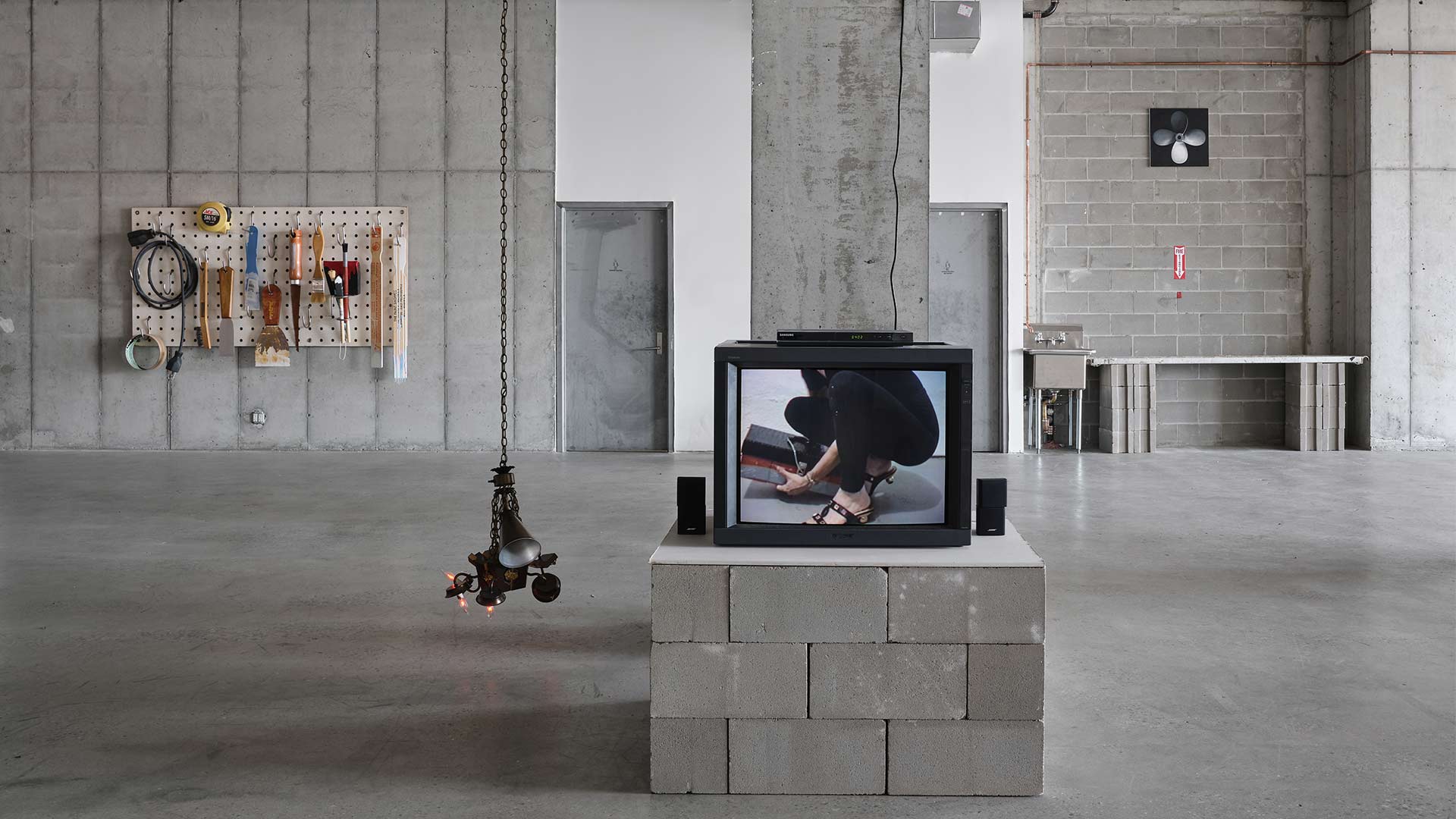International Objects, for their ongoing exhibition, begin their concept note quoting a letter addressed to American artist and illustrator Djuna Barnes from German-born avant-garde visual artist and poet Baroness Elsa von Freytag-Loringhoven:
“I very vividly in memory fall in love with my past lovers — as [a] carrier of the sun message — as [the] meaning of all-system: ‘perpetual screw!’ I see — how perishable they themselves were — how deteriorated in care and affection by time — as earthly things will — until they become dull mechanics — which I did not let suffer to happen — hence my utter loneliness — and had I understood more of the —outer life machinery [sic] appertaining to emotion— to give it practical possibility — I should — and very plentifully at least could — have provided against such time as now.” Baroness Elsa von Freytag-Loringhoven, Letter to Djuna Barnes, University of Maryland Libraries. c. 1924 – 1927.
Following their debut show Local Objects, New York-based International Objects, for the second group exhibition, turns the focus to artworks that position tools and hardware as their protagonist. With Perpetual Screw, the art and design gallery presents a repository of creations that stem from and revolve around the much-revered tools and technology. The art exhibition, on view from September 30 to November 12, 2023, dives into the veneration of—and trepidation towards—new technologies that has been a constant throughout history and across civilizations. “The tools and materials devised by each generation represent a seemingly magical extension of human power, making inroads into the erstwhile realms of the divine,” the gallery states in the official release.
In order to fully follow the story of the exhibition it is important to trace some of the significant moments of standardised tools. The industrial revolutions of Europe were accompanied by revolutionary and imperial powers; the new technologies were staged through several enticing exhibitions. The Exposition des produits de l’industrie française came about as a celebration of French technology held from 1798 to 1849 that offered “a panorama of the productions of the various branches of industry with a view to emulation” as per a catalogue by Anne Dion-Tenenbaum. In 1851, the Great Exhibition of the Works of Industry of All Nations unfolded in a Crystal Palace built for the occasion. The event allowed Britain to reiterate its superiority as a colonising empire in all fields where strength and quality were concerned—in iron and steel, machinery or textiles. “The display of technologies, as evidenced by the history of exhibitions that have captured them, is a meaningful conflation of modernism with modernity,” reads the official release.
To equalise the showcase of these technologies, artists and artisans addressed handcrafted products for their singularity against the standardised objects devised by new machinery. Ergo, the Arts and Crafts Movement emerged in the second half of the 19th century as a repartee against the emergent factory-style industrialization capturing modes of production. Employing tools with the awareness of their symbolic potential, artists imbued value into the materials and processes that were often the subject of the work itself.
In 1917, amidst these dynamics at play, an exhibition was underway to be hosted by the Society of Independent Artists in New York. German-born avant-garde visual artist and poet Baroness Elsa von Freytag-Loringhoven had sent an upended urinal, dubbed Fountain, from Philadelphia to New York to Marcel Duchamp, who subsequently submitted it for inclusion in the exhibition. “The piece, later inscribed with the male pseudonym of the Baroness ‘R. Mutt,’ was unceremoniously rejected by the 'unjuried' exhibition selection committee prompting Duchamp, a ‘friend’ of the Baroness, to resign from the group and bring the piece to the 5th Avenue studio of Alfred Stieglitz, where it was photographed and then lost or destroyed,” the release elaborates.
Baroness Elsa created a similar sculpture that year consisting of a cast iron plumbing trap mounted on top of a wooden mitre box. Titled God, the work positioned common hardware as a physical manifestation of the divine. This glorification of vernacular hardware marked a significant shift in the art discourse of the time—the veneration of objects in such exhibitions rested on the foundations of the history that preceded it. A connection of tools and hardware to the ethereal realms was revived. Perpetual Screw takes cues from this atypical intersection of the pragmatic and the imaginative, and how one fuels the other.
Tools and hardware are emblematic of the objects that they are capable of producing and represent the teleological expression of their user. Hardware becomes an interface for artists to imagine countless possibilities of materials. At times, the tools and materials might also assume a political role or are a reflection of the artists’ labour or action. International Objects, continuing their effort to blur the categories that keep art and design apart, conceives a show that questions, and defies one such boundary—unearthing a surprising collaboration. Or, per Baroness Elsa, hardware can be elevated to create a dogmatic vision—based in the material world where the imposition of an ordinary thing can “create a new thought for that object” akin to the gestural manipulations of a spiritual power.
‘Perpetual Screw’ will remain on view from September 30 to November 12, 2023, at International Objects in Brooklyn, New York.






 Sign in with email
Sign in with email










What do you think?